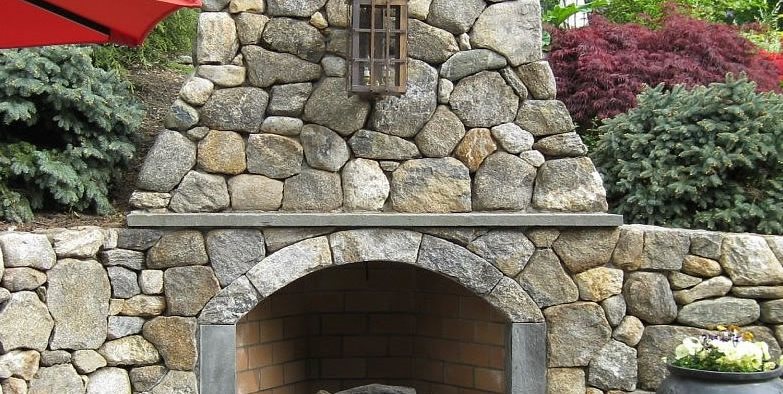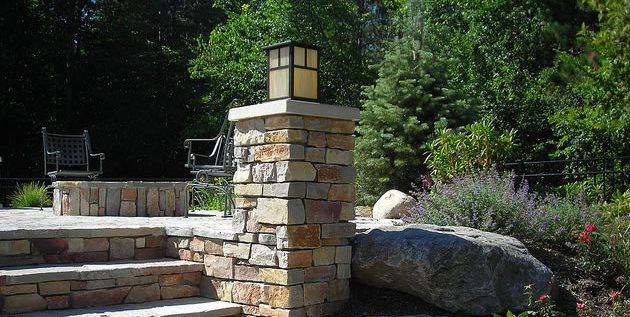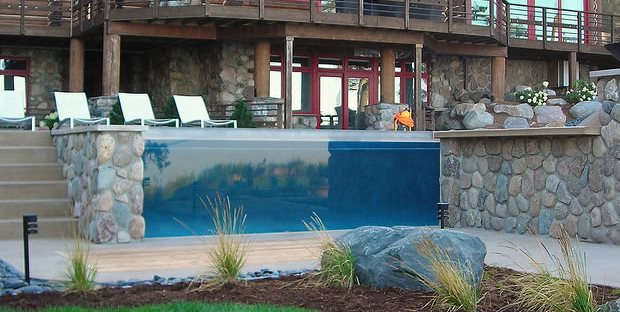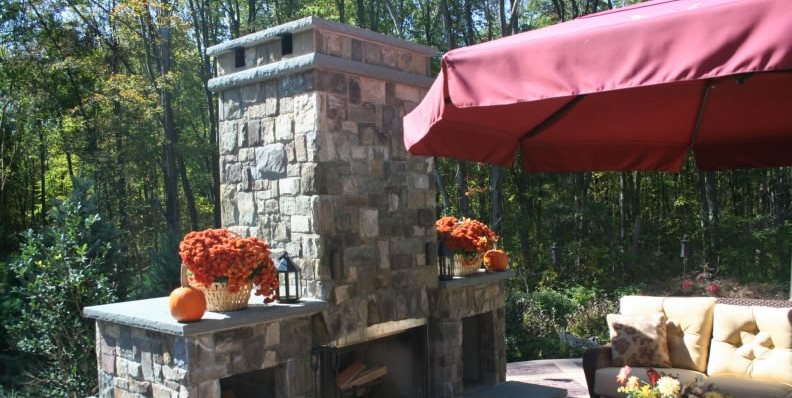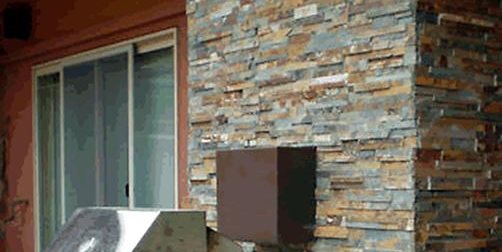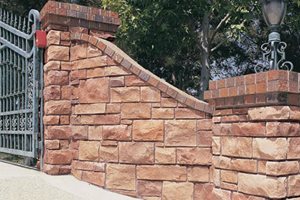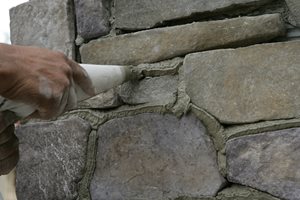Real Stone Veneer
Discover the benefits of locally quarried cut stone veneerToday the biggest trend in stone landscape structures is to utilize locally quarried materials. This is not only a sustainable landscaping choice due to more limited transportation costs, but there is also a general desire to remain within a regional design vernacular. Even though there are more different types of natural stone veneers available than ever before, the preference for locally sourced material is consistent wherever the geology permits.
Decades ago, walls were built and clad in whole stone, which was a lot like building two walls sandwiched together. This utilized field stone, often locally originated. The structural wall was built of block or poured concrete, and a veneer of decorative stone was added to the outside. These were constructed of whole stones and the cumulative weight required an extension of the footing for support.
Today's stone veneer may look the same but it's a lot lighter. Whole stones are sliced apart so that the face looks natural but the depth of the veneer is only 3" to 5" thick. This is light enough to allow the veneer to adhere to the structural wall so there's no cumulative loading at the base. Cut stone halves the material cost and transportation fees due to only 50% of the weight.
When stone is cut, the original stone face allows for the uniquely rounded edges that distinguishes old style stone clad walls. This results in attractive shadow patterns and the rustic irregular look of old world masonry. Thick stone veneer can also have a cut face, which allows for ashlar and other precise patterns.
At Massachusetts based Stoneyard.com, rounded Boston Blend recycled from old New England farm walls is an ideal material for rounded veneers. "Boston blend gives older more traditional look that can vary by shape," says David Croteau. "Round is a great foundation stone for brick houses, but stone foundations are so earthy they give any structure a much more stable appearance. It's great for an outdoor fireplace, fire pits, columns for wood fences and even mailbox posts. Boston blend round is more difficult to install, but it is a relic of New England and our customers recognize that."
In New York, Neave Group Outdoor Solutions focuses strictly on the timeless beauty of natural stone. "There are so many different ways to build the walls, and that has a lot of influence," says Corey Bittner. "We are building with actual field stone so it isn't worth it to use veneer."
"However, we can build whatever they want with veneer with whatever stone they want. Kitchens, walls and fireplaces, foundations etc. If you go with a natural stone, we use locally quarried material. A lot of our product is from New York and Connecticut, but some patio stone is dull so you need to be careful with color selection. What's most popular here is the bluestone cap with a rock faced edge to match the stone texture. Sometimes we use a stone cap that is smooth."
In Michigan, Apex Landscape also utilizes the local stone. Landscape architect Matt Schmuke prefers a regional look. "We set rock into a landscape to make it look like it's always been there. We like it to appear as though it was quarried on site. In Michigan, field stone or granite is locally sourced so it looks more appropriate. But that's limited, so we will go further afield within the Midwest to try to remain regionally natural. We want our projects to look local. We stress that the durability of natural stone is essential for use around pools. When we build a raised wall for pools or anything with water running over the surface we use natural stone."

 Backyards
Backyards
 Front Yards
Front Yards
